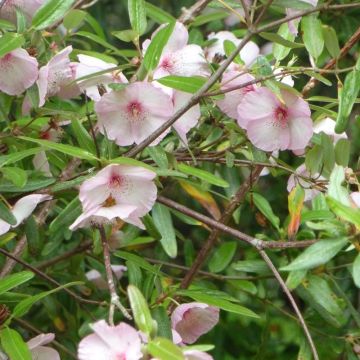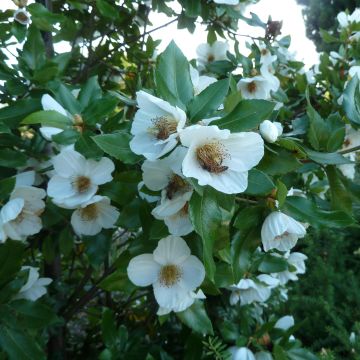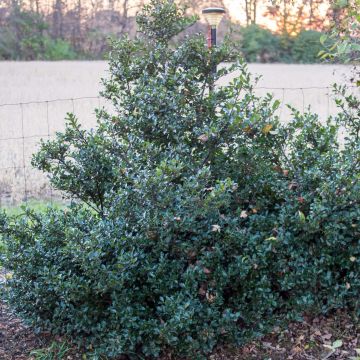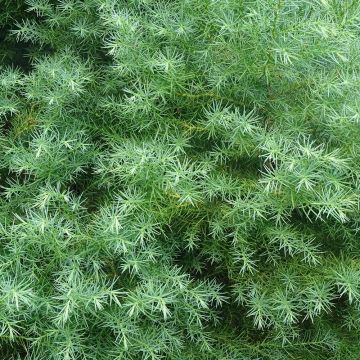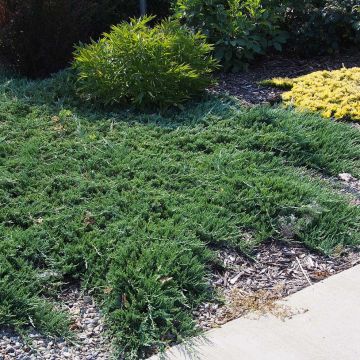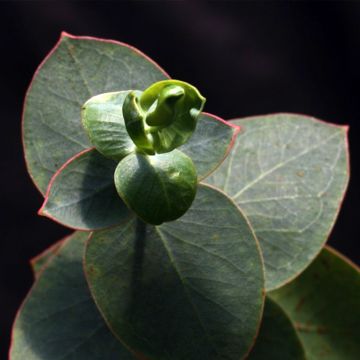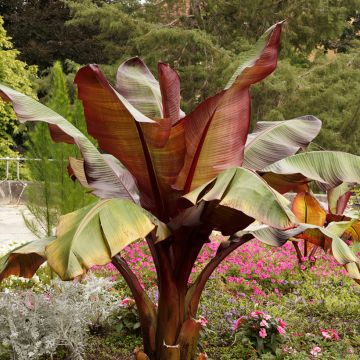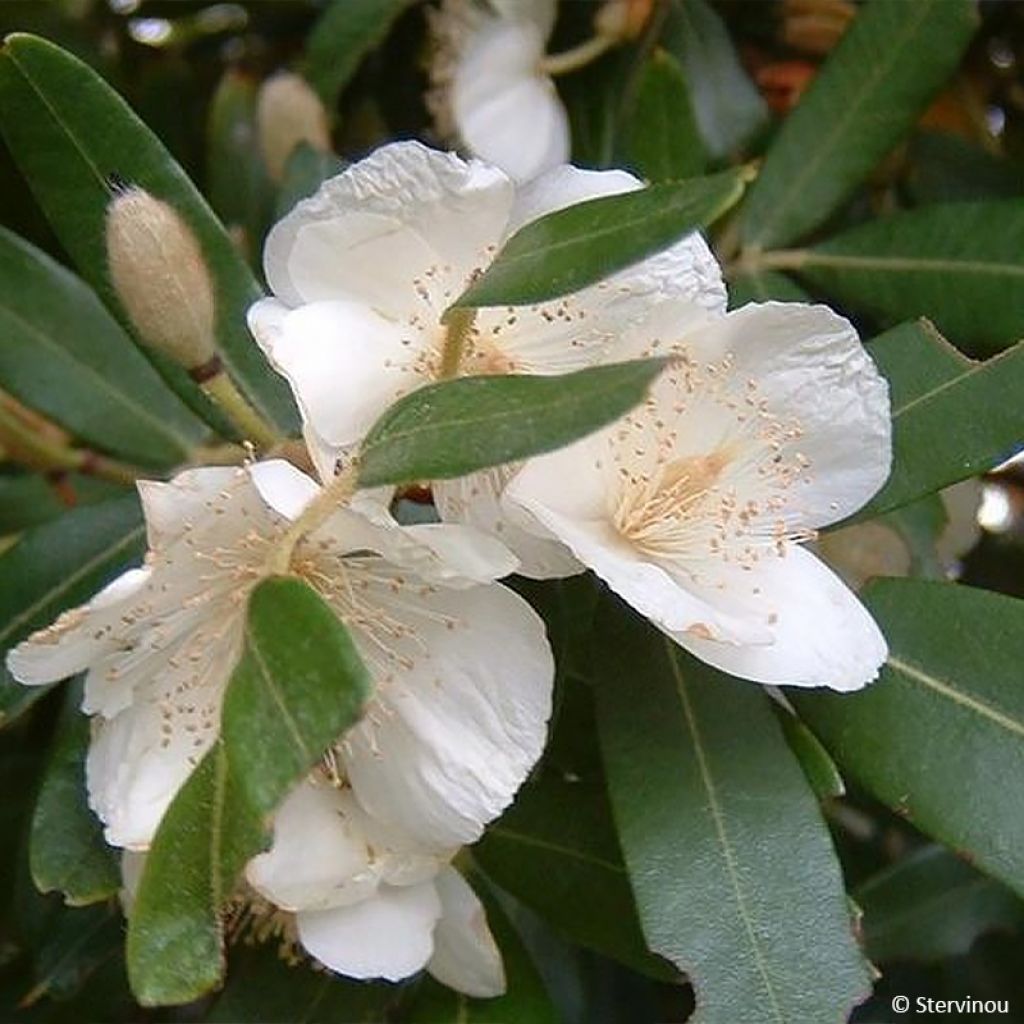

Eucryphia moorei - Eucryphia de Moore
Eucryphia moorei
Eucryphia moorei
Eastern Leatherwood, Pinkwood
This item cannot be shipped to the selected country
Delivery charge from €5.90
More information
Schedule delivery date,
and select date in basket
This plant carries a 24 months recovery warranty
More information
We guarantee the quality of our plants for a full growing cycle, and will replace at our expense any plant that fails to recover under normal climatic and planting conditions.
From €5.90 for pickup delivery and €6.90 for home delivery
Express home delivery from €8.90.
Does this plant fit my garden?
Set up your Plantfit profile →
Description
The Eucryphia moorei, also known as Moore's Eucryphia or Pinkwood in its native country, is a beautiful evergreen bush native to the moist forests of southeastern Australia. Capable of reaching the size of a small tree in favourable climates, it charms with its white summer flowering of rare generosity, complemented by an elegant foliage with beautiful dark green colour. This plant, which requires delicate care, is not very hardy and can only be acclimated in the ground in well-sheltered gardens in coastal areas. It should be planted in partial shade and protected from drying winds, in acidic to neutral, well-drained, and moist soil.
Eucryphia moorei belongs to the Cunoniaceae family, which includes about 300 species of trees and shrubs found in temperate to tropical regions of the southern hemisphere. In nature, this tree grows on moist slopes adjacent to the coasts of New South Wales and Victoria, where it can reach a height of 25 metres (82 feet). In our favourable climate, it does not exceed 8 metres (26 feet 2 inches) in height and 4 metres (13 feet 1 inches) in width when grown in the ground. When grown in containers, its dimensions will be much smaller. An adult specimen can withstand temperatures down to -5 °C, but its foliage is destroyed below -2 °C.
The Eucryphia moorei is a moderately fast-growing bush with an upright habit. Its foliage remains throughout the winter. The leaves are compound, consisting of large leaflets that are 5 to 13 oblong and narrow, each measuring 2.5 to 5 cm (1 to 2 in) in length. The upper side is dark green, while the underside is lighter. The abundant flowering occurs in July-August and takes the form of small cup-shaped flowers measuring 3.5 cm (1.4 in) in diameter. They are composed of 4 broad white petals crowned with stamens with brown anthers. The flowers are formed in the axils of the leaves, either singly or in small groups, mainly towards the upper part of the plant. This flowering is highly attractive to pollinating insects. After pollination, winged seeds are formed in small capsules.
The Eucryphia moorei is cultivated in the ground in regions with mild winters and temperate summers, only in well-drained non-chalky soil. To accompany it, consider the Chilean Fire Tree (Embothrium coccineum), the Metrosideros Mistral, or the Grevillea robusta, for example, shrubs that thrive in similar conditions. If pruned annually, it can be grown in large pots or containers. In colder regions, it will be necessary to find a place to overwinter it, such as a conservatory.
Report an error about the product description
Eucryphia moorei in pictures
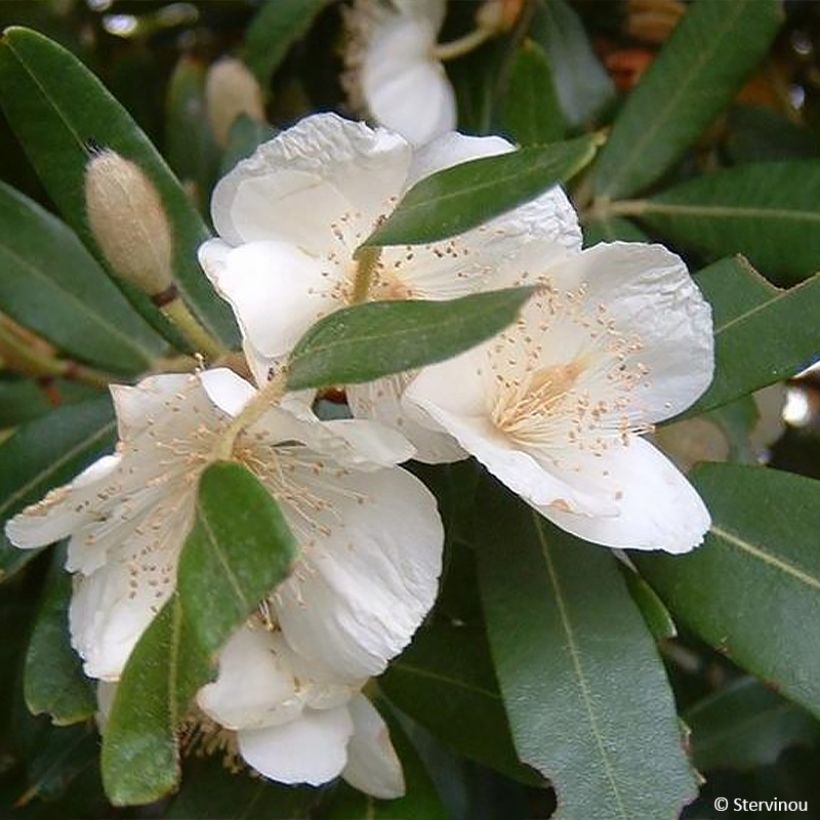

Plant habit
Flowering
Foliage
Botanical data
Eucryphia
moorei
Cunoniaceae
Eastern Leatherwood, Pinkwood
Australia
Other Eucryphia
Planting and care
In a very mild climate, plant your Eucryphia moorei in the ground, in bright partial shade, choose a well-sheltered spot from the wind. This bush likes humid atmospheres as well as fresh, humus-rich, light, acidic to neutral and well-drained soils. It is also beneficial to cover the base with ericaceous soil and to apply a pine bark mulch every spring. It does not tolerate soil or air dryness, but can withstand sea spray. Make sure to water it (with non-limestone water) in case of dry summer and mulch the base. You can also accompany it with ground cover plants to limit its water needs. It must be protected from the cold in the winter, as the plant dies below -5°C (23 °F) and its foliage is damaged from -2°C (28.4 °F). Pruning is not necessary due to its slow growth, but if you want to maintain a compact habit, choose to prune it in early spring after the risk of frost. The pruning should be light, as heavy pruning will irreversibly weaken the tree.
Cultivating it in a large volume pot is possible, in a mix of ericaceous soil, leaf compost and sand. Water regularly with non-limestone water and mist the foliage in the evening during hot weather.
Adapted to the coastal regions (mild winters, rather humid summers and not too hot), this bush is not suitable at all for hotter climates, which are much too hot and dry in summer. In addition, it does not tolerate limestone and clay soils.
Planting period
Intended location
Care
This item has not been reviewed yet - be the first to leave a review about it.
Evergreen shrubs
Haven't found what you were looking for?
Hardiness is the lowest winter temperature a plant can endure without suffering serious damage or even dying. However, hardiness is affected by location (a sheltered area, such as a patio), protection (winter cover) and soil type (hardiness is improved by well-drained soil).

Photo Sharing Terms & Conditions
In order to encourage gardeners to interact and share their experiences, Promesse de fleurs offers various media enabling content to be uploaded onto its Site - in particular via the ‘Photo sharing’ module.
The User agrees to refrain from:
- Posting any content that is illegal, prejudicial, insulting, racist, inciteful to hatred, revisionist, contrary to public decency, that infringes on privacy or on the privacy rights of third parties, in particular the publicity rights of persons and goods, intellectual property rights, or the right to privacy.
- Submitting content on behalf of a third party;
- Impersonate the identity of a third party and/or publish any personal information about a third party;
In general, the User undertakes to refrain from any unethical behaviour.
All Content (in particular text, comments, files, images, photos, videos, creative works, etc.), which may be subject to property or intellectual property rights, image or other private rights, shall remain the property of the User, subject to the limited rights granted by the terms of the licence granted by Promesse de fleurs as stated below. Users are at liberty to publish or not to publish such Content on the Site, notably via the ‘Photo Sharing’ facility, and accept that this Content shall be made public and freely accessible, notably on the Internet.
Users further acknowledge, undertake to have ,and guarantee that they hold all necessary rights and permissions to publish such material on the Site, in particular with regard to the legislation in force pertaining to any privacy, property, intellectual property, image, or contractual rights, or rights of any other nature. By publishing such Content on the Site, Users acknowledge accepting full liability as publishers of the Content within the meaning of the law, and grant Promesse de fleurs, free of charge, an inclusive, worldwide licence for the said Content for the entire duration of its publication, including all reproduction, representation, up/downloading, displaying, performing, transmission, and storage rights.
Users also grant permission for their name to be linked to the Content and accept that this link may not always be made available.
By engaging in posting material, Users consent to their Content becoming automatically accessible on the Internet, in particular on other sites and/or blogs and/or web pages of the Promesse de fleurs site, including in particular social pages and the Promesse de fleurs catalogue.
Users may secure the removal of entrusted content free of charge by issuing a simple request via our contact form.
The flowering period indicated on our website applies to countries and regions located in USDA zone 8 (France, the United Kingdom, Ireland, the Netherlands, etc.)
It will vary according to where you live:
- In zones 9 to 10 (Italy, Spain, Greece, etc.), flowering will occur about 2 to 4 weeks earlier.
- In zones 6 to 7 (Germany, Poland, Slovenia, and lower mountainous regions), flowering will be delayed by 2 to 3 weeks.
- In zone 5 (Central Europe, Scandinavia), blooming will be delayed by 3 to 5 weeks.
In temperate climates, pruning of spring-flowering shrubs (forsythia, spireas, etc.) should be done just after flowering.
Pruning of summer-flowering shrubs (Indian Lilac, Perovskia, etc.) can be done in winter or spring.
In cold regions as well as with frost-sensitive plants, avoid pruning too early when severe frosts may still occur.
The planting period indicated on our website applies to countries and regions located in USDA zone 8 (France, United Kingdom, Ireland, Netherlands).
It will vary according to where you live:
- In Mediterranean zones (Marseille, Madrid, Milan, etc.), autumn and winter are the best planting periods.
- In continental zones (Strasbourg, Munich, Vienna, etc.), delay planting by 2 to 3 weeks in spring and bring it forward by 2 to 4 weeks in autumn.
- In mountainous regions (the Alps, Pyrenees, Carpathians, etc.), it is best to plant in late spring (May-June) or late summer (August-September).
The harvesting period indicated on our website applies to countries and regions in USDA zone 8 (France, England, Ireland, the Netherlands).
In colder areas (Scandinavia, Poland, Austria...) fruit and vegetable harvests are likely to be delayed by 3-4 weeks.
In warmer areas (Italy, Spain, Greece, etc.), harvesting will probably take place earlier, depending on weather conditions.
The sowing periods indicated on our website apply to countries and regions within USDA Zone 8 (France, UK, Ireland, Netherlands).
In colder areas (Scandinavia, Poland, Austria...), delay any outdoor sowing by 3-4 weeks, or sow under glass.
In warmer climes (Italy, Spain, Greece, etc.), bring outdoor sowing forward by a few weeks.

































